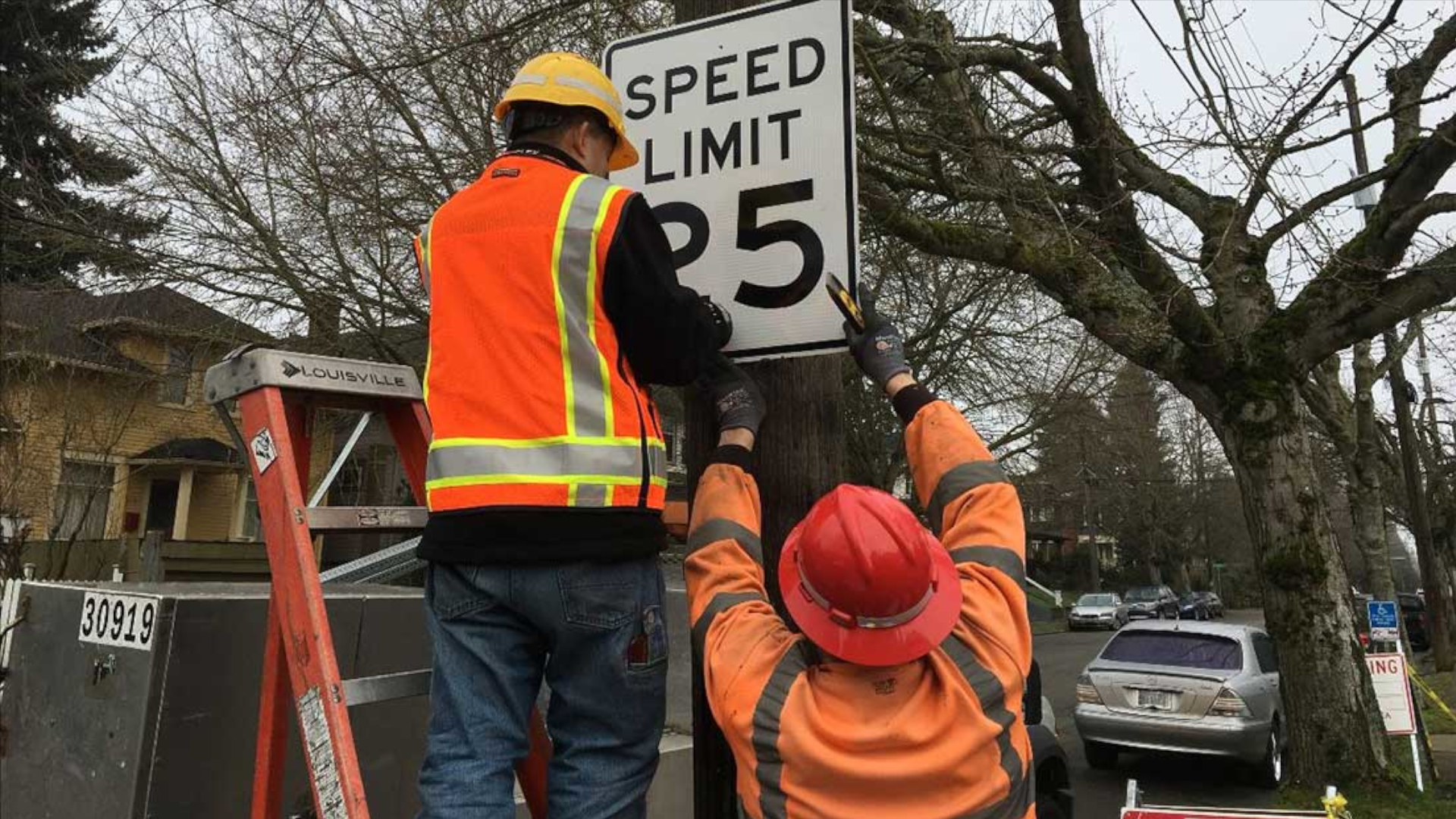

We may earn revenue from the products available on this page and participate in affiliate programs. Learn more ›
Some people will tell you that driving slower is inherently safer. Of course, anecdotes and opinions are no substitute for real data, so the Insurance Institute for Highway Safety (IIHS) decided to do the research instead.
The report from IIHS concerns a study done on Seattle’s decision to drop its speed limits, beginning in November 2016. The default speed limits for arterial roads were dropped from 30 mph to 25 mph, with a focus on installing new 25 mph signage in downtown areas. Smaller, primarily residential streets, had their limits dropped from 25 mph to 20 mph. As a part of the measures, the city erected new signage and conducted an outreach campaign to notify the public of the change.
Researchers found that the changes appeared to have a positive effect, reducing so-called “KAB injuries” in crashes. This stands for fatal (K), disabling (A), and evident (B) injuries, as per the Department of Transport injury scale. The speed limit drop was correlated with a significant 17 percent reduction in injury crashes in downtown areas. Focusing only on arterial roads, the reduction was as high as 20 percent. Outside of the downtown area, though, while reductions were observed, they were not statistically significant. The figures came out to a drop of 7 percent overall, and 11 percent where only arterial roads were considered.

Overall, there are valid reasons why dropping speed limits can help reduce crashes and injuries to motorists. Traveling slower gives drivers more time to react to hazards, helping avoid many crashes entirely. Additionally, kinetic energy rises with the square of speed. Thus, even a minor drop in speed can drastically reduce the energy involved in a collision.
The IIHS report does explore some reasons that might explain why certain areas didn’t see a statistically significant drop in injuries. It notes that this may be due to the smaller sample size, given the lower traffic and thus lower incidence of crashes in these areas. The report also explains that many of the residential streets involved are relatively narrow with both sides open to on-street parking. In these conditions, the drop from 25 mph to 20 mph may have had little effect, as many drivers wouldn’t have driven at the full limit anyway due to the conditions.
With the success it has found thus far, Seattle is continuing to roll out lower limits. Since the study period ended, many arterial roads formerly signposted at higher speeds have had their limits dropped to 25 mph. To that end, the city has removed 750 speed limit signs, while installing 2,600 new signs to make the changes obvious to motorists.
While the reduction in limits has had a measurably positive effect, that doesn’t mean that the policy is necessarily universally popular. 25 mph is a very slow limit for an arterial road, after all. With that said, as frustrating as lower limits can be, it’s a small tradeoff to make for less injuries out on the roads.
Got a tip? Let the author know; lewin@thedrive.com
